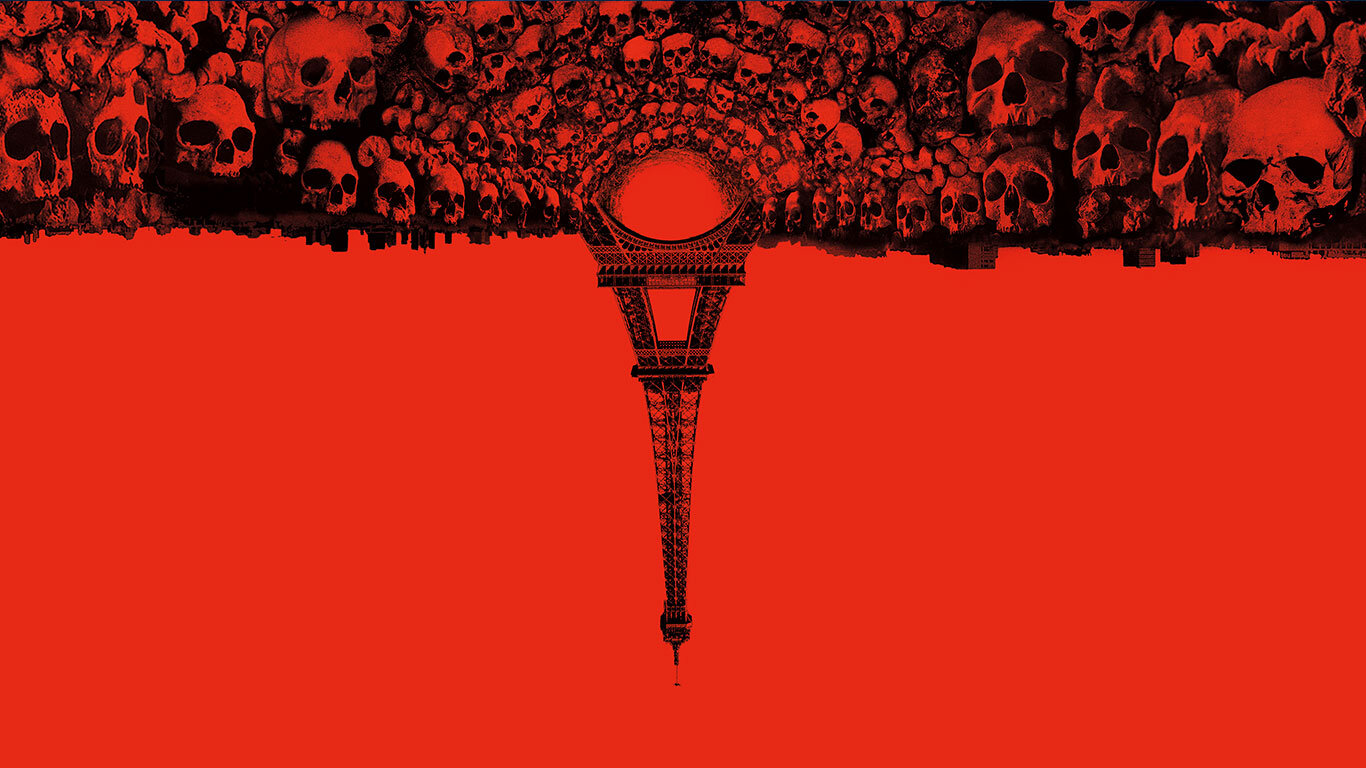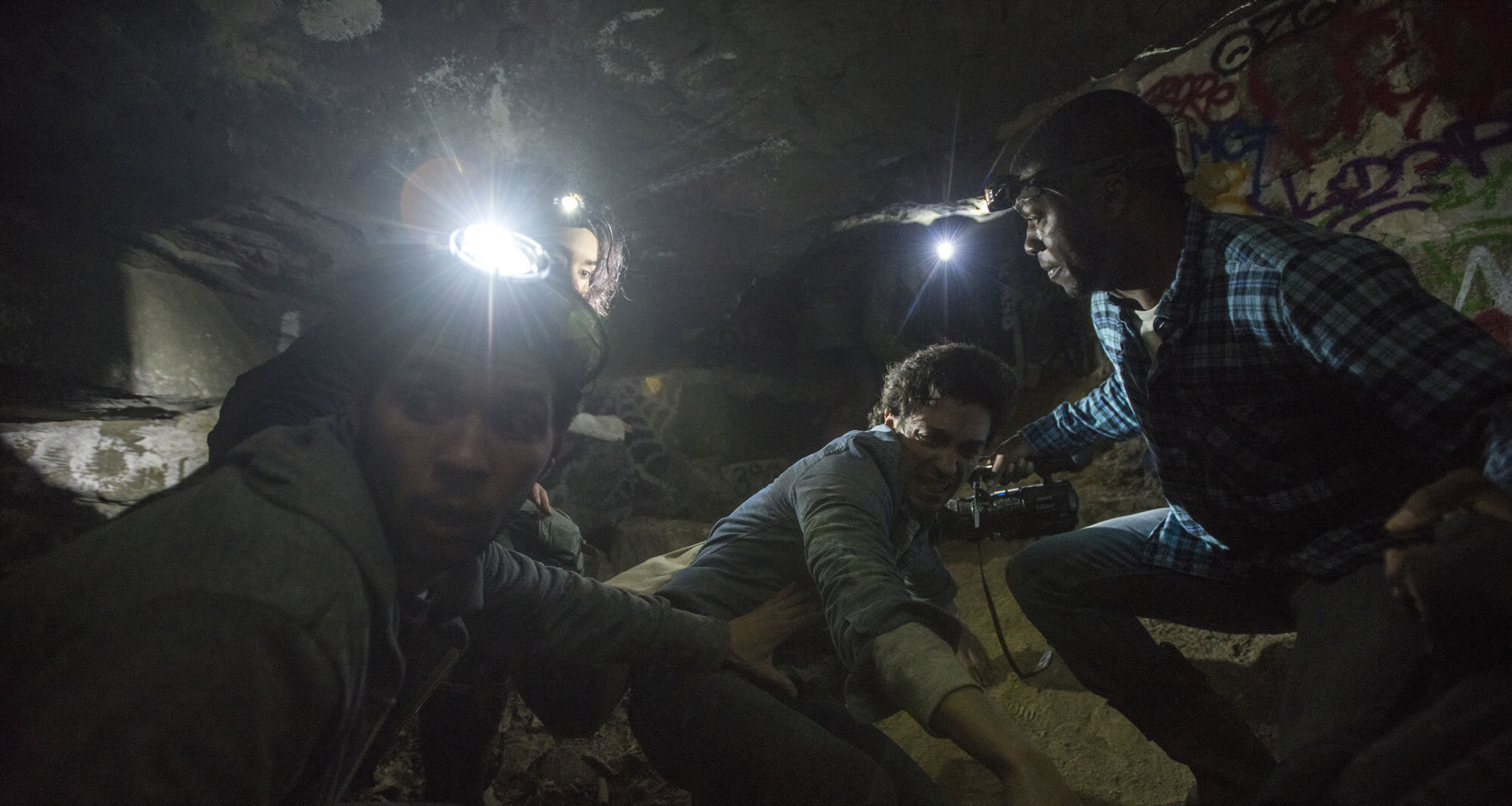Up Up Down Down - As Above, So Below (2014)
In some alternate universe, I still write regular movie and video-game reviews, running my own entertainment website. In that same universe, I am now A FUCKING MEDIA MOGUL and next in line to be president of an undefined country.
In this universe, however, I'm a normal guy who's fallen out of the habit of being creative, shut down his old website and doesn't even have that many movies under the Reviews tab of this blog.
The easiest way to rectify that is by watching films that I've missed over the last few years, and when they strike me as being particularly cool or interesting or worth talking about, then maybe, just maybe, I'll type a couple hundred words about them.
Over the weekend, I watched one of those films (one I think I missed in cinemas because its release date coincides with me having chemo.)
That film was As Above, So Below.
What I expected was a claustrophobic tale of underground monsters haunting a bunch of millennials going urban-spelunking, and I know with certainty that said claustrophobia is why I didn't want to watch it when it released. But challenging those expectations, I instead found a weirdly mystical film that appealed to a whole lot of different thoughts and that I just didn't want to end.
We begin with Scarlett Marlowe (Perdita Weeks) arriving in Iran and finding an ominously demonic statue covered with carvings that might be able to help her find answers that are both academic, and personal. Scarlett barely escapes with her life, and then heads to Paris, where she meets up with ex-boyfriend George (Ben Feldman) to help her decode the text on the carvings.Scarlett believes that her answers lie in the catacombs under the city, and when she suggests she wants to go deeper into the tunnels, a stranger suggests that she find some help.
Scarlett, George and cameraman Benji (Edwin Hodge) find Papillon (Francois Civil), Souxie (Marion Lamber) and Zed (Ali Marhyar) at a nightclub and with the promise of treasure, they agree to help Scarlett enter the dangerous and forbidden parts of the tunnels. Benji sets them all up with head-cams (if is a first-person/found footage film after all) and despite George's claustrophobia, the team begin their descent.
So much of this sounds and feels like The Descent that this film actually hampers itself by neglecting some of the diner details in its pitch: Scarlett's goal is the tomb of legendary alchemist Nicholas Flamel where she expects to find the Philosopher's Stone (or at least some verification of its existence.) Scarlett isn't looking for the stone for fame or glory, though: Scarlett's just following in her father's footsteps, and wants to prove to herself that he didn't die a crazy old man.
So far, so very Tomb Raider. No, really: with Scarlett's accent, I was convinced that actress Weeks was also the voice of Lara Croft in the most recent Square Enix games (and I was then genuinely surprised when I consulted IMDB and found that not to be the case.) That expectation remained throughout the film (no, I didn't hope on IMDB while watching.)
The catacombs themselves aren't exactly abandoned: they're a counter-culture in and of themselves, filled with graffiti (some of it Papillon's own) and a group of chanting cultists. Scarlett is intent on a route that the natives believe to be bad luck, but after a claustrophobic episode that returns them to the same passage, they agree to give Scarlett's path a try.
In addition to the skulls and rats, the group find a ringing telephone, a discordant piano that plays just like one that George remembers and La Touche, an old friend of our locals that went missing several years previously.
The film was shot in the actual catacombs under Paris, and they make for an amazing location that allows the production to establish a sense of claustrophobia that still feels survivable, with the tunnels lending a weird sense of space that allows characters to move side-by-side and walk at their full height.
The unease comes from the other sense instead: from the maze-like corners and the curious sounds (or lack thereof.)
Sound and light prove to be come of the film's strengths: the head-cams keep the angles tight, and the setting means that there is always a shadow expected ahead. The film doesn't do much in the way of jump-scares: there are a few cheap ones in there, but the film instead relies on disorientation and confusion to do its work.
That also plays into some interesting work with the film's sound design: the film dips into an interesting moment of audio that feels like a production glitch (or that you yourself are going deaf) until the characters themselves notice...and then act equally confused and scared.
It's an unusual moment to suddenly become aware of a film's sound-direction: let's be honest, you're not meant to be aware of sound effects, right? This one is aggressive enough that it takes you out of the film for just a moment, and while it works by being suitably disorienting, it pulls you far enough out of the film that it might be unnecessarily jarring.
The same can be said of the rest of the film's audio, with speedy conversations between the multinational characters that are never slow enough for us to truly invest in them, their individuality or their issues. Their reactions to the catacombs are similarly distracting, with much of the exposition getting lost in the mix of accents (English, French and American.) Conversation is delivered at frantic speed meaning that some of the finer explanations of the gang's predicament are lost alongside some of the more interesting elements of the film's plot.
Because As Above, So Below markets itself as a horror film as per this trailer, the reality is so much more interesting. By engaging with the Philosopher's Stone and the narrative of Nicholas Flamel, the film tries to turn its back on monsters and demons, focusing instead on how those demons and monsters are created by the human psyche.
This isn't a movie about oija boards and fallen angels: this is at, its heart, a film about chaos magick.
Yep, I'm spelling it with a k, and I won't apologise.
Sure, the film creates bloody tunnels and deadly figures as a result of this chaos magick, but the origins of this chaos, the sense of discord and threat within this film, comes entirely from within these characters (and perhaps, like all good art, that reflects back on the audience as well, playing with that sense of expectation and reality.)
Sure, most horror films can be considered as character studies through a particular mode or theme (be that family, bereavement, a sense of home...you name it.) But As Above, So Below sets the civilised mind at its heart, wondering how the reactions between the two shapes and controls the word around us. The space between these two organs is exactly where horror lies, and related to that horror, the home of chaos magick.
If you're unsure what chaos magick is, think of it as a sort of active wish-fulfilment that crosses religion with psychology. There's no hard-and-fast rules as to how to practice, but it ultimately involves using thoughts and attitudes to affect the world.
Taking this to some extremes, the film uses the tropes of a horror film in a study that suggests that no external monsters can hurt these characters any worse than they can hurt themselves, and they can only find salvation with that realisation. The film plays through those themes by building a world of uncertainty that is controlled and changed by its characters (or perhaps in this case, by the production team rather than a more powerful will...that's right, I'm getting meta!)
Befitting the name of the film, the visual locations reflect this attempt to make sense of uncertainty: with the team's ascent blocked, they realise that they are driven to descend even further, only for their path to repeat itself and apropos of nothing, find their way back to Paris once more.
Just like the psyche, it is only be descending into darkness and fear, by acknowledging it and its power, that one can truly ascend once more.



